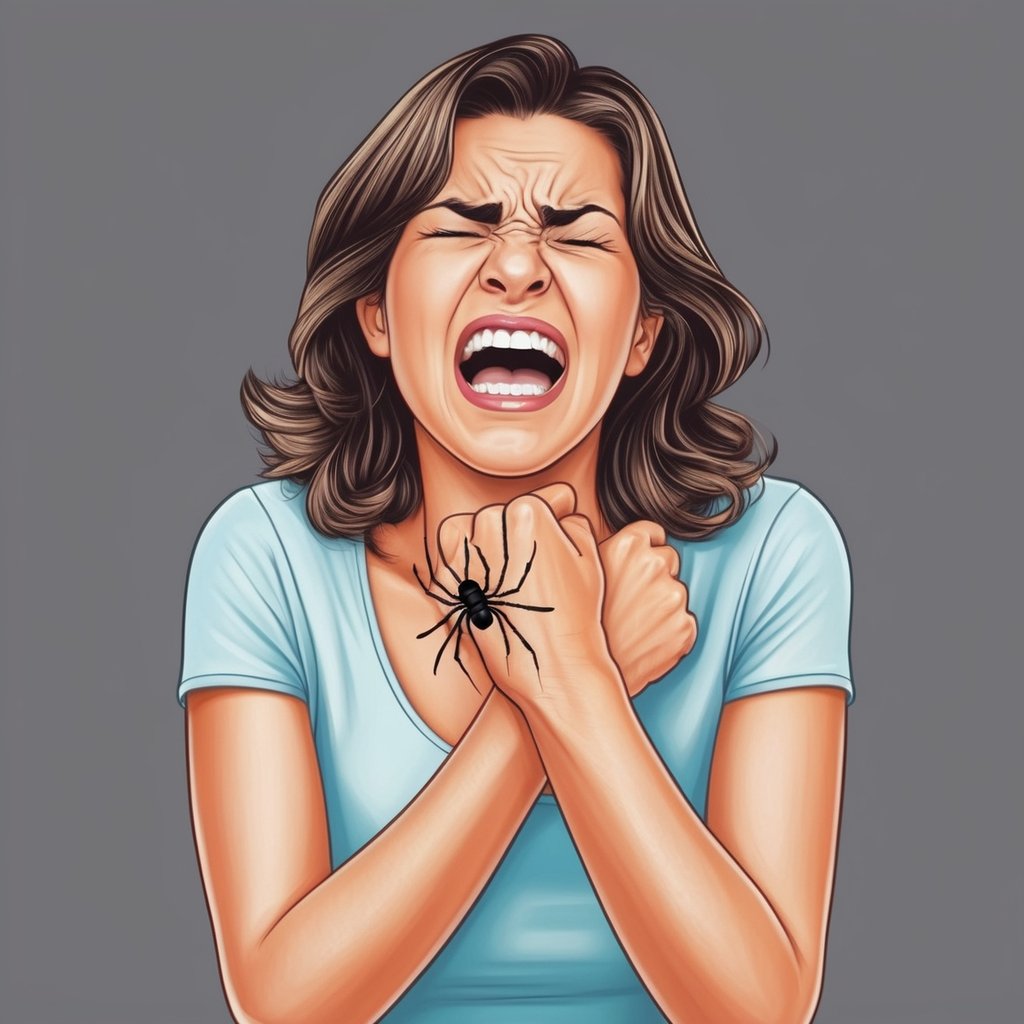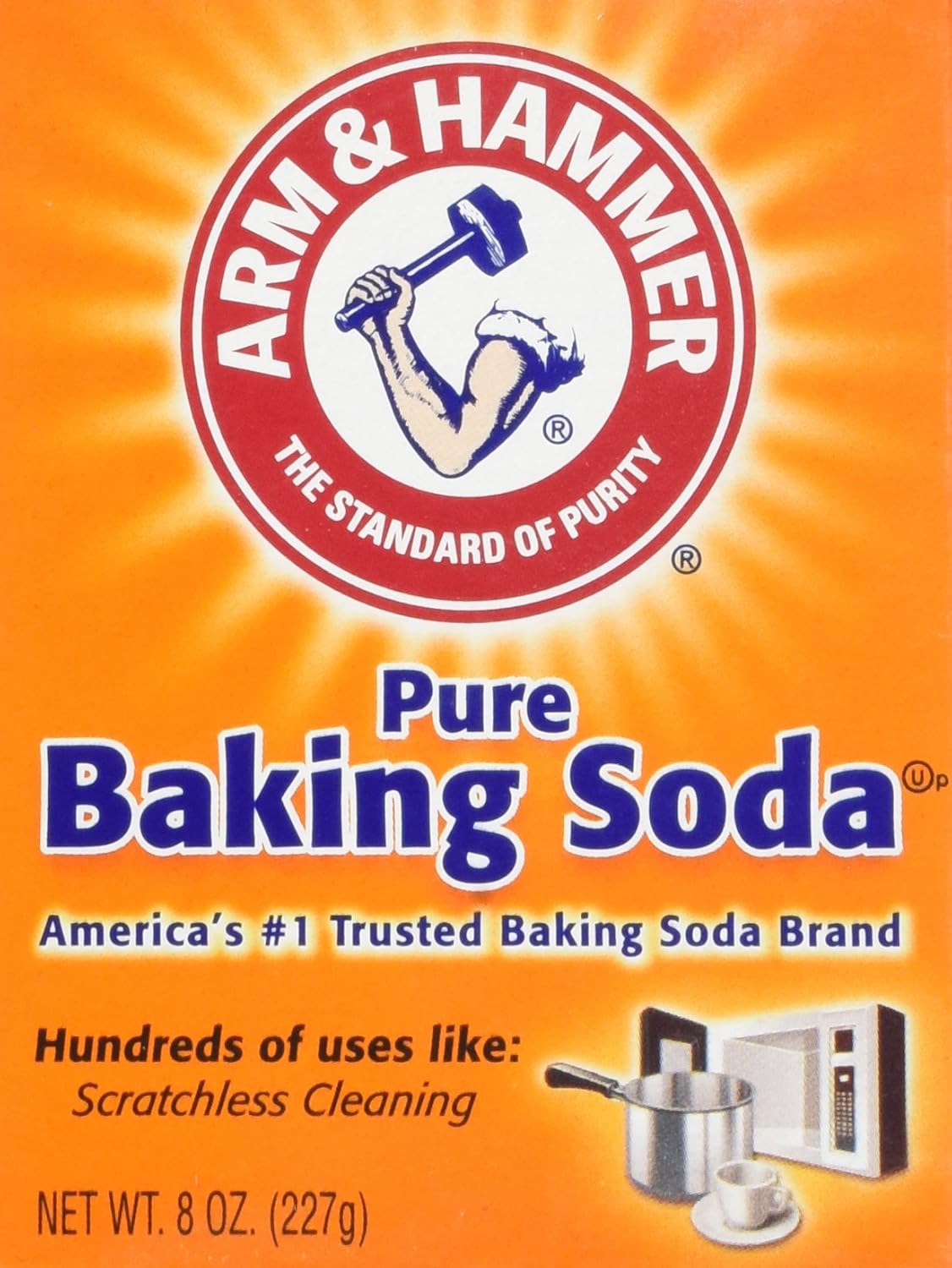Baking Soda for Spider Bites: A Simple Solution to Relieve Itching and Discomfort
Baking soda is one of those household items that can do more than just keep your fridge smelling fresh. It can also provide relief if you get bitten by a spider. Many people swear by baking soda for its ability to soothe the itching and swelling associated with spider bites. By mixing it with water to create a paste, you can make a simple yet effective treatment that helps draw out toxins and reduce discomfort.

When dealing with spider bites, it’s important to act quickly to minimize symptoms. Baking soda is a natural and cost-effective solution that you can easily apply at home. There are other remedies and preventive steps you can take to ensure your comfort and safety, but knowing how to use baking soda is a great start.
If you find yourself dealing with a spider bite, don’t panic. You’ll discover how baking soda can serve as a helpful tool in your first-aid kit. With the right approach, you can manage the symptoms and get back to enjoying your day.
Key Takeaways
- Baking soda can soothe spider bites by reducing itching and swelling.
- Quick treatment can help prevent further discomfort and infection.
- Knowing home remedies empowers you to handle minor injuries effectively.
Understanding Spider Bites
Spider bites can be concerning, especially if you’re unsure about the type of spider involved. Knowing how to identify spiders and distinguishing between venomous and non-venomous bites can help you take the right steps for treatment.
Identifying Common Spiders
When dealing with spider bites, it helps to know which spiders are common in your area. Here are a few to watch for:
- Brown Recluse: Often found in warm, dry areas, they have a distinct violin shape on their back. Their bite can be serious, leading to tissue damage.
- Black Widow: Recognizable by its shiny black body and red hourglass on the belly. Their bite is venomous and can cause severe pain and muscle cramps.
- Hobo Spider: Typically brown with a patterned abdomen. While not as dangerous, their bite can cause irritation.
- Tarantula: Generally non-threatening, although their bite can be painful. They’re more of a nuisance than a serious threat.
Knowing the appearance of these spiders can help you avoid dangerous bites.
Venomous vs Non-Venomous Bites
Understanding the difference between venomous and non-venomous bites is crucial.
- Venomous Spiders: These include the brown recluse and black widow. Their bites can lead to symptoms like swelling, pain, and in severe cases, even systemic reactions. Seek medical attention immediately if you suspect a venomous bite.
- Non-Venomous Spiders: Many common spiders fall into this category, including the hobo spider and tarantula. Their bites might cause mild irritation or redness but are generally not harmful. Home remedies, such as applying a baking soda paste, can help relieve discomfort from these bites.
Being aware of these factors can empower you to respond effectively to spider bites.
Immediate Response to Spider Bites
When you get a spider bite, acting quickly can help reduce discomfort and irritation. Here’s what you can do as an immediate response.

Initial First Aid
Start by washing the bite area gently with soap and water. This helps remove any dirt and reduces the chance of infection. After that, apply a cold compress to the bite for 10 to 20 minutes. This can help reduce swelling and numb the area.
You can also make a paste with baking soda and water, and apply it to the bite. This might help neutralize the venom and relieve discomfort. If you have it handy, applying aloe vera gel can soothe irritation and promote healing.
In some cases, activated charcoal may help absorb toxins from the bite. Mix it with water to form a paste, then apply it directly to the affected area. Remember, keep an eye on the bite and how you feel afterward.
When to Seek Medical Attention
While most spider bites can be treated at home, you should know when to get help. Seek medical attention if you notice severe symptoms like intense pain, redness spreading from the bite, or swelling that won’t go down.
You should also go to a doctor if you experience unusual symptoms like headaches, dizziness, or any trouble breathing. These could be signs that your body is reacting negatively to the bite.
If you have trouble identifying the spider or if you believe it may be venomous, it’s worth getting checked out. Early intervention can be important for your safety.
Home Remedies for Relief
When dealing with spider bites, you can find relief through various home remedies. Baking soda is well-known for its effectiveness, while other natural solutions like aloe vera and honey can also help soothe the irritation.
Baking Soda Applications
One of the simplest ways to use baking soda is to create a paste. Mix 3 teaspoons of water with 1 teaspoon of baking soda until it forms a thick consistency. Apply this paste directly to the spider bite and let it sit for about 15 to 30 minutes. Baking soda works by drawing out toxins and reducing itching, swelling, and pain.
You may want to reapply this paste several times a day for best results. Some people find that applying it before bed allows them to sleep without discomfort. Just remember to wash it off gently with water afterward to avoid residue.
Herbal and Natural Solutions
In addition to baking soda, several herbal remedies can provide comfort for spider bites. Aloe vera is fantastic for cooling the skin and reducing inflammation. Simply apply fresh aloe vera gel from the leaf directly to the bite.
Honey also has natural antibacterial properties. Dab a small amount on the bite and cover it with a bandage. Another great option is calendula cream, which can promote healing and help soothe irritation.
Turmeric, known for its anti-inflammatory benefits, can be mixed with water to form a paste. Apply it similarly to baking soda. Finally, consider using essential oils like tea tree or lavender, which can add extra soothing effects when diluted properly.
Preventing Infections and Promoting Healing
Taking care of a spider bite is crucial for preventing infections and promoting healing. You can follow some simple steps to make sure the area stays clean and help your body recover faster.
Hygiene and Care
Keeping the bite clean is your first line of defense. Wash the area gently with soap and water. This helps remove any dirt and venom that could cause infection.
After washing, you can apply a baking soda paste. Mix baking soda with a little water to create a poultice and apply it directly to the bite. This can soothe itching and reduce swelling.
You might want to use an Epsom salt soak as well. Dissolve Epsom salt in warm water and soak the affected area for about 15 minutes. This can help draw out any toxins and ease discomfort.
Advanced Home Treatments
If you’re dealing with discomfort, an oatmeal bath can be great for healing. Just add oatmeal to a warm bath and soak for around 20 minutes. This can help calm irritated skin.
Consider taking an aspirin for pain relief, but remember to follow the dosage recommendations. Always stay hydrated, as drinking plenty of water can support your body’s healing process too.
Using these methods can help keep your skin healthy, reduce itching, and speed up recovery. Just make sure to keep an eye on the bite for signs of infection, like increased redness or pus.
Long-Term Spider Bite Management and Prevention
Managing spider bites and preventing future issues are essential for your comfort and well-being. You can treat spider bites at home effectively and take steps to keep your environment spider-free.
Ongoing Care and Scar Reduction
After a spider bite, keeping the area clean is crucial. Wash the bite gently with soap and water to prevent infection. Apply a baking soda paste to help reduce swelling and pain. You can also use natural remedies like witch hazel, known for its anti-inflammatory properties.
If scar formation occurs, you can consider using potato slices. The starch can help lighten scars and promote healing. Applying a moisturizer keeps the skin hydrated and aids recovery.
Make sure to monitor the bite for any signs of infection. If you notice increased redness, swelling, or pus, consult a doctor for treatment options.
Preventative Measures in the Home
To avoid spider bites, implement several pest solutions around your home. Start by sealing cracks and gaps in windows, doors, and walls. This will help keep spiders outside where they belong.
Regular cleaning is essential. Vacuum corners, under furniture, and in closets to remove webs and eggs. Consider using natural repellents like essential oils—peppermint oil is especially effective.
Reducing clutter also minimizes spider habitats. Store items in sealed containers rather than cardboard boxes. Lastly, keep outdoor lighting minimal to avoid attracting insects, which in turn will deter spiders.
Frequently Asked Questions
If you’ve got questions about using baking soda for spider bites, you’re in the right place. Here are some common concerns and helpful tips to guide you through the process.
How do you use baking soda to treat spider bites?
To use baking soda for spider bites, mix three teaspoons of water with one teaspoon of baking soda to create a paste. Apply this paste directly on the bite. Make sure to cover it completely and even extend beyond the edges of the bite to help with healing.
Can baking soda really draw out venom from a spider bite?
Baking soda is known for its alkaline properties, which can help neutralize toxins. It’s believed to draw out some venom and reduce symptoms like swelling and pain. While it can be effective for minor bites, it won’t work for more severe cases.
What’s a good home remedy for spider bite swelling and itching?
Along with baking soda, you can use cold compresses to reduce swelling and itching. Applying a clean, damp cloth with cold water can soothe the area. Be sure to monitor your bite for any signs of infection.
How long should you leave the baking soda paste on a spider bite?
It’s usually best to keep the baking soda paste on the bite for about 15 to 30 minutes. Afterward, rinse it off with cool water. You can reapply it several times a day to manage symptoms.
Are there any risks of using baking soda on spider bites?
Baking soda is generally safe for most people, but some may experience skin irritation. If you notice increased redness or irritation after applying baking soda, stop using it and consult a doctor.
Does baking soda remedy work on all types of spider bites?
While baking soda may help with minor spider bites, it’s not a guaranteed remedy for all types. If you experience severe symptoms or suspect a poisonous bite, seek medical attention right away.

